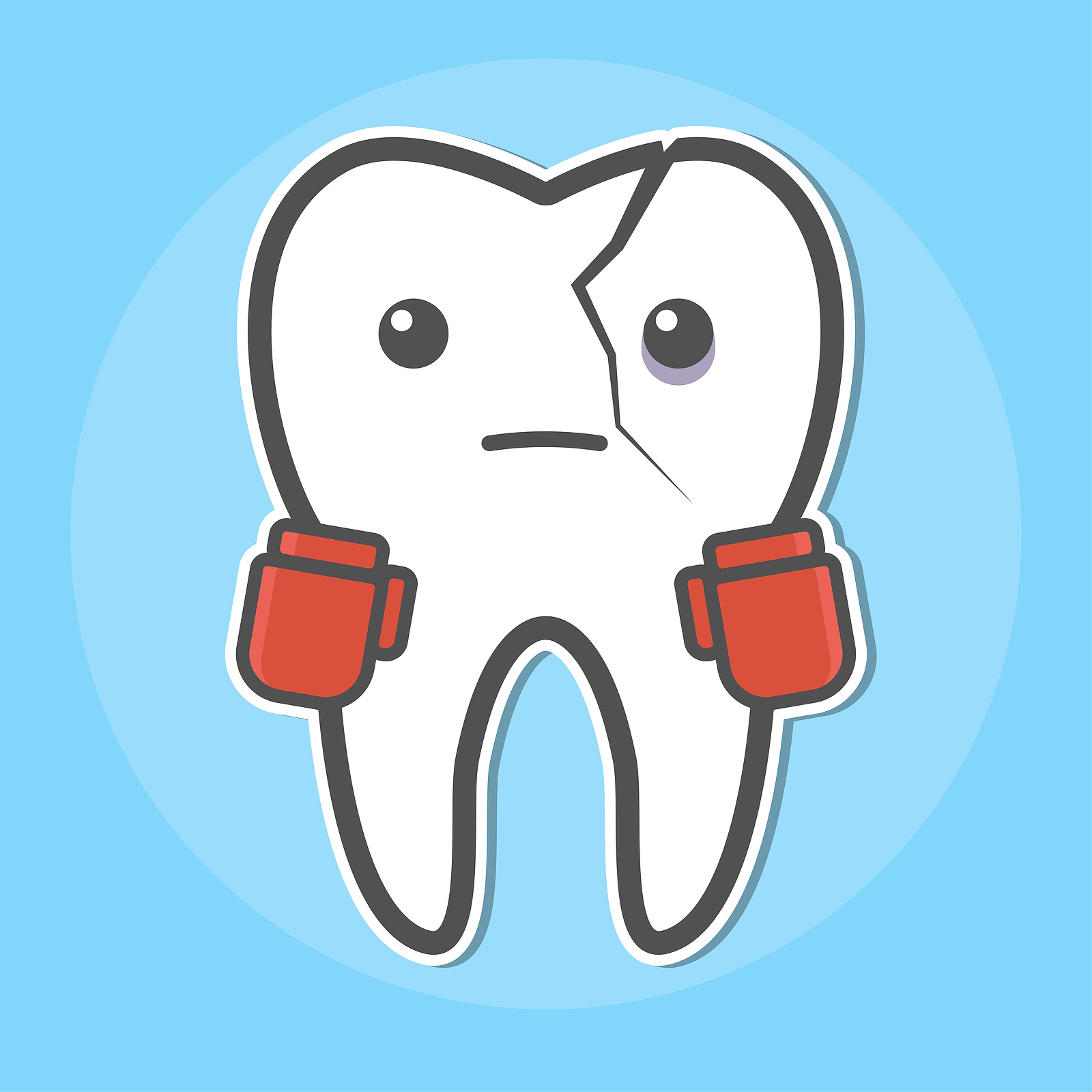Even if you follow an excellent oral hygiene routine, with regular brushing, flossing and dental check-ups, it’s possible that you may still experience problems with your teeth at some point.
Cracks and chips are very common and can happen for a variety of different reasons, whether that’s down to biting or chewing on something hard, grinding your teeth, fillings that cause weakness, sustaining an injury to the chin or lower jaw, gum disease or sudden changes in mouth temperature.
There are different types of crack to be aware of and some will require more urgent treatment than others. These include:
Craze lines
Craze lines are tiny cracks that only appear on the outer enamel of the tooth. They’re very common in adult teeth and won’t cause you any pain. They do not need to be treated by a dentist.
Cracks
Cracked teeth are characterised by a crack that runs from the biting surface towards the root, sometimes going below the gum line. Here, the tooth itself doesn’t split into two but the softer inner tissue typically sustains some kind of damage. You will need to go and see a dentist to find out more.
Split teeth
If you have a cracked tooth that goes untreated, it can split into two parts. You may see the split running below the gum line.
Vertical root fractures
Here, you may see vertical cracks that start below the gum line and extend towards the biting surface of the tooth. You may not experience any symptoms in this instance, unless the tooth pulp itself becomes infected.
How to tell if you have a cracked tooth
Unfortunately, cracked teeth don’t always cause symptoms but there are signs to look out for, including:
– Sharp pain when biting down
– Swelling around the affected tooth
– Toothache when biting or chewing
– Sensitivity to temperature changes
– Sensitivity to sweetness
If you’re worried about any of your teeth and have any concerning symptoms, aim to see a dentist as soon as you can so they can diagnose you appropriately.
They will ask you about your symptoms and any potential causes that could be contributing to the problem (such as stress, which can lead to teeth grinding).
They’ll then check over your teeth and look for cracks, damage and inflammation, as well as potentially using a light to illuminate any cracks or use staining dye to reveal them more effectively. Dental X-rays may also be carried out.
How can cracked teeth be treated?
The appropriate course of treatment for your cracked tooth will largely depend on the extent of the damage, but common treatments include:
– Dental bonding, where cracks are filled in with resin
– Dental contouring, where rough edges are smoothed out and the tooth polished
– A dental crown, where a ceramic or porcelain cap is fitted over the crack
– Veneers, where custom shells are made to fit over the front of the tooth
– Tooth extraction, where severe damage is done to the root and nerves
– Root canal, if a crack goes down into the tooth pulp and causes an infection
Can cracked teeth cause dental abscesses?
While not always problematic, cracked teeth can make it easier for bacteria to access the tooth pulp and this can cause a dental abscess, an infection where pus builds up in the gums that can spread to the surrounding bone and teeth if it goes untreated.
Untreated dental abscesses can also travel to the soft tissues in the face and neck, as well as to the heart (causing endocarditis) and even to the brain (causing bacterial meningitis). However, while it’s important to be aware of these risks, note that these complications are rare.
Symptoms of dental abscesses include:
– Intense toothache
– Pain in the gums
– A bad taste in the mouth
– Sensitivity to hot/cold food and drink
– Redness inside the mouth, as well as on the face and/or jaw
– A high temperature
– Swelling
– Difficulty opening your mouth
– Difficulty chewing
If you do suspect that you have an abscess, it’s important to see a dentist as soon as you can. They will need to drain the pus to ensure that the infection is entirely cleared.
In the meantime, you can ease the associated pain by taking painkillers like paracetamol and ibuprofen, avoid hot/cold/sugary food and drink, use a soft toothbrush when cleaning your teeth and eating soft food like yoghurt, scrambled eggs and warm soup.
You can also order antibiotics online in the form of amoxicillin, which is the front-line penicillin treatment for dental abscesses.
This is used to treat bacterial infections such as chest infections (including pneumonia), as well as abscesses and ear infections. It can also be taken in conjunction with other medication to treat stomach ulcers.
Typically, a course of amoxicillin involves taking it three times a day to treat the infection, before or after food. You should start to feel better after a couple of days. Aim to spread the doses out evenly throughout the day, in the morning, mid-afternoon and before bed.
Continue taking the treatment until you finish the course, even if you start to feel better. If you stop treatment early, you run the risk that the infection could return.
Preventing dental abscesses
While it’s not always possible to prevent cracks (and you will likely become more susceptible as you get older), you can help to prevent dental abscesses from forming by practising good oral hygiene.
Aim to brush your teeth with fluoride toothpaste at least twice a day and floss with dental tape or interdental brushes at least once a day.
See your dentist every six months and consider having a scale and polish at least once a year to prevent plaque buildup and so they can keep an eye on any problems before they become difficult to resolve.







